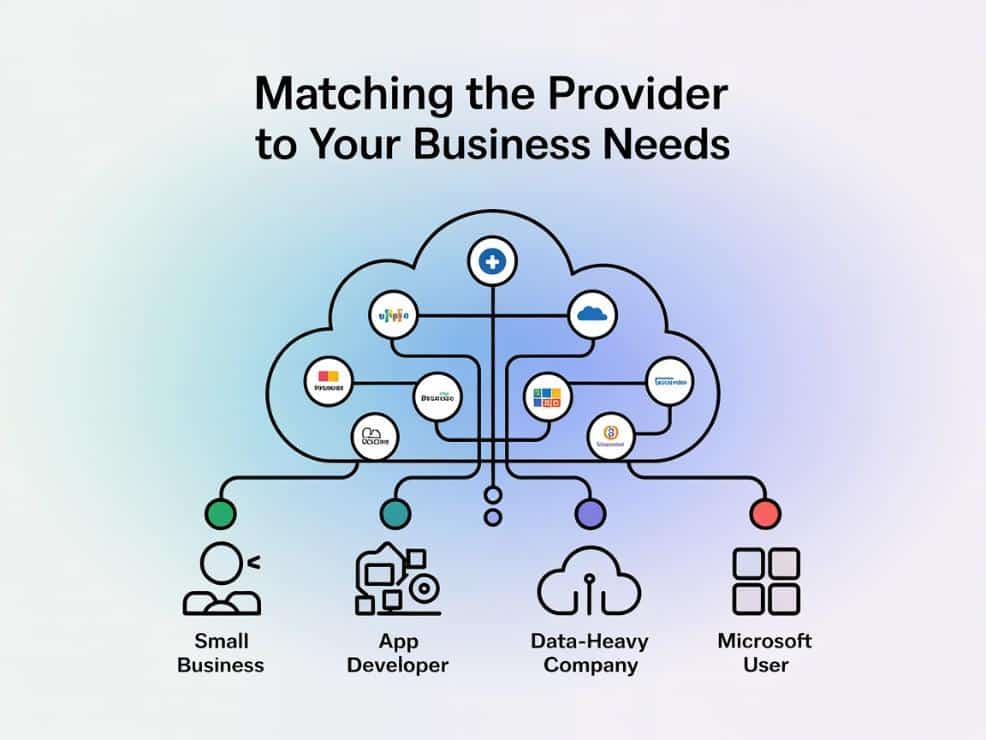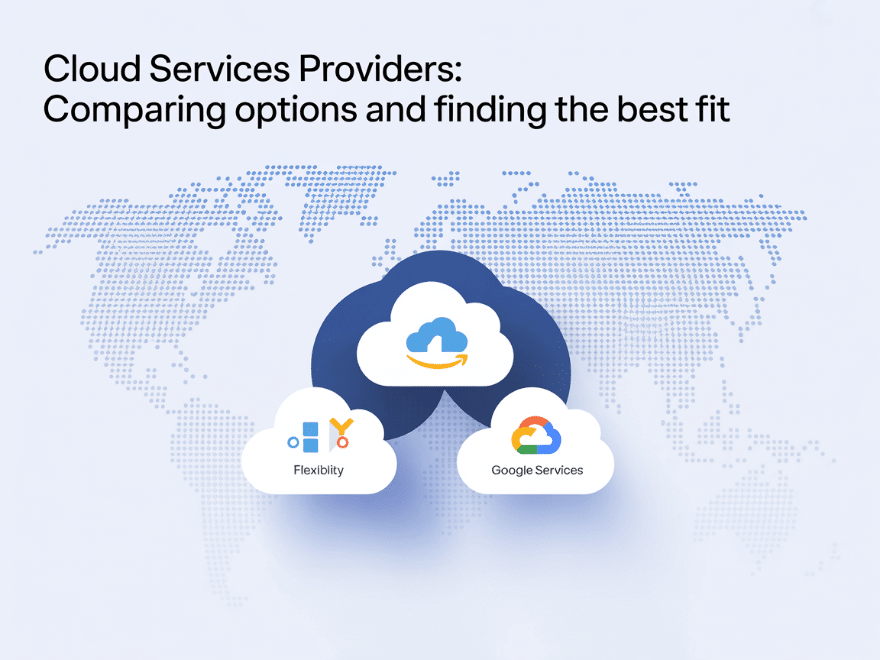Cloud services have become an integral part of how businesses run today. From data storage to website hosting and app running, cloud platforms do much heavy lifting. With an increasing number of providers, all boasting speed, strength, and flexibility, deciding upon one can get very confusing.
This guide will look at what defines a ‘good’ cloud services provider, what to look for, and how to compare your choices based on your business needs. In case you still need to get the basics down, you can read our post on cloud services to give you a general idea of how such services help conduct day-to-day activities in today’s businesses.
What Makes a Good Cloud Services Provider?
A cloud services provider provides tools and infrastructure necessary for businesses to operate over the Internet. These services generally include hosting, storage of files, deployment of applications, and so forth. With these services, one can avail of enormous computing resources without needing to buy or maintain physical servers.
A cloud service builds on cloud computing technology whereas cloud computing serves as its’ foundation – cloud services are those tools with which you interact. Therefore, the choice of provider made will consequently determine the effectiveness of the given tools at use by your team.
Key Factors to Consider When Choosing a Provider
Let’s look at the most important things to check when picking a cloud services provider:
Performance and Uptime
Systems should always be in operation. Providers usually promise 99.9% availability or better. Figure out if they have the multiple data centers around the globe, thus fewer latencies when using the services.
Scalability and Flexibility
A provider must grow with you. It may be starting with little usage, but as time goes on the cloud too must expand with your growing business. Amazon Cloud Services is the best platform in such cases: they allow you to add resources when required without any downtime or hassle.
Understanding how infrastructure plays a role in the cloud helps you see why backend power is important to support everything you build on top.
Pricing and Cost Transparency
No hidden charges. A good service provider will give you upfront clear-cut prices. Pay-as-you-use plans that fit your needs should be sought. Some even provide trial models or not requiring a fee for a period so that you can try the service before committing.
Integration and Compatibility
Your cloud provider should work well with your existing tools. Whether you’re using Microsoft Office, Google Workspace, or custom apps, make sure your chosen platform supports them. Most IT cloud service company functions depend on an integrated product in order to optimize their teams’ productivity.
Security and Compliance
Security is non-negotiable. Seek a provider with encryption, access controls, firewalls, and compliance features (like readiness for GDPR or HIPAA). These keep your data safe and also your business reputation.
Support and Documentation
When things go bad, is there a quick way to reach assistance? Good providers avail their customers of access 24/7 to live chat and straightforward user guides. Reliable help matters, even to experts and novices.
Top Cloud Services Providers Compared
Here’s a quick look at three of the most popular cloud providers and what they’re best known for:
| Provider | Best For | Key Strengths |
| Amazon Web Services | Startups, small developer teams, or fast-growing businesses | Scalable infrastructure, wide variety of products, a global reach |
| Google Cloud | Heavy data companies or AI-based teams working | Best in analytics, excellent AI tools, and Google integrations |
| Microsoft Azure | Organizations that use Windows and Microsoft tools | Easy Microsoft integration with hybrid cloud solution |
Each of these platforms brings something different to the table. Choosing one depends on your tech stack, business size, and long-term goals.
We’ve also written about how platforms like Google Cloud Services and Amazon Cloud Services compare in specific use cases—like app development or ecommerce traffic.
Matching the Provider to Your Business Needs
There’s no single best cloud provider. The best choice is the one that fits your goals. Here’s how to break it down:

- New or growing company? Explore free tiers and affordable plans that offer flexibility and room to scale.
- App developer? You’ll want deep control, fast scaling, and flexible tools.
- Data-heavy company? Look for strong analytics, machine learning, and storage options.
- Using Microsoft tools daily? Azure might be the smoothest fit.
This kind of thinking is what we talked about in our post on choosing the right cloud services provider. It’s about fit, not hype.
Common Mistakes to Avoid
Some businesses jump in too fast. Here are a few things to avoid:
- Choosing based only on price
- Ignoring long-term growth
- Overlooking fine print in contracts
- Forgetting to ask about customer support
- Skipping over security details
Note: Taking the time to compare providers properly can save you time and money later on.
Final Checklist for Evaluating Providers
Here’s a quick list to keep in mind:
- Uptime and reliability: Is 99.9% uptime guaranteed with global data offers?
- Scalability and performance: Can their system grow with your business when traffic increases?
- Pricing clarity: Are costs clear? Pay-as-you-go? Free-tier?
- App and tool compatibility: Can it integrate with any of your existing software or systems?
- Security and compliance features: Do they have built-in encryption, access control, and compliance?
- Support availability: Can support be reached any time of the day, every day? Or are live chat, documentation, or guided onboarding offered?
Use this as a reference when narrowing down your top choices.
Final Thoughts
Choosing a cloud services provider doesn’t have to be confusing. With some information about your business needs, you can confidently cross-reference your options. The goal is not to just get online but to remain fast, secure, and scalable.
Understanding the difference between cloud computing and cloud services is good if one is still figuring out how cloud platforms can work together. And for designing a system that stealthily works wonders, infrastructure tools play a big part.
If your current cloud services provider is not delivering the performance, support, or pricing that you need, let this be the cue to make the switch.

